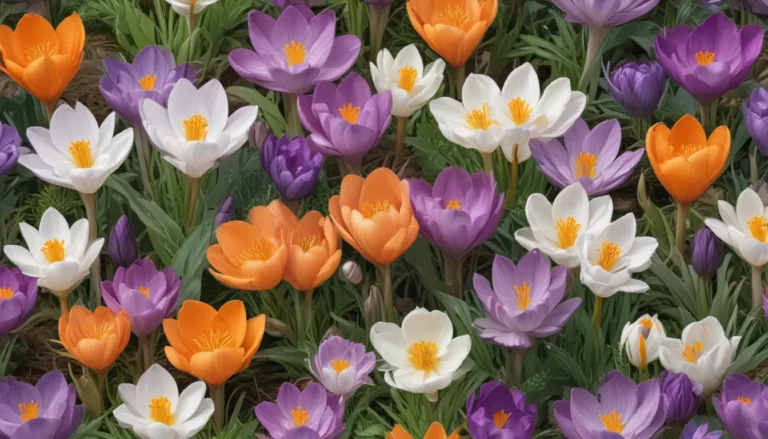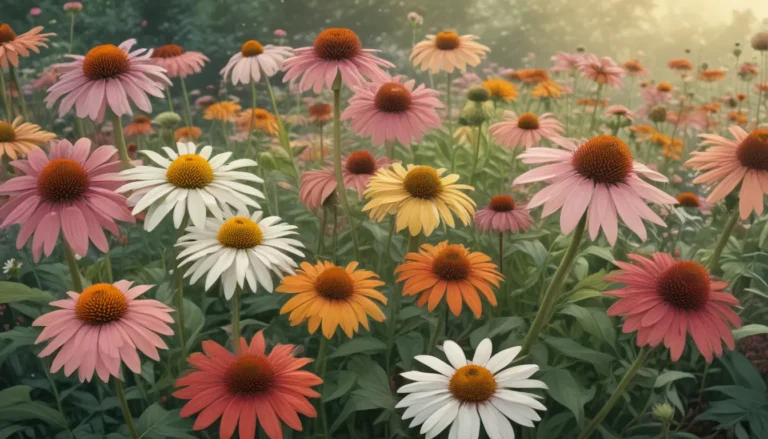How to Plant and Grow Shallots: Allium cepa var. aggregatum and A. oschninii

Shallots are a delightful addition to any garden, blending the best of onions and garlic into one tasty bulb that is versatile and beloved in cuisines around the world. Although often considered a specialty ingredient in the United States, growing your own shallots can be a rewarding experience. In this comprehensive guide, we will delve into the different types of shallots, how to grow them, and valuable tips for cultivating these delicious bulbs in your garden.
What Are Shallots?
Shallots belong to the Allium genus and the Amaryllidaceae family. They come in different varieties, with the French A. oschaninii and Dutch A. cepa var. aggregatum being the most well-known. The French shallots are often grown from sets and characterized by a hard scar at the bottom, while Dutch shallots are grown from both seed and sets, featuring bulb clusters with hairy roots.
In terms of flavor, shallots have a pungent raw taste that transforms into a mild and sweet flavor when cooked. They are not commonly grown commercially in the US, meaning that you may find them at farmers’ markets or decide to grow them yourself.
Cultivation and History
Shallots have a mysterious origin, possibly originating from central Asia and finding their way to Europe via India. The term “shallot” evolved from various translations and interpretations over the centuries.
Shallots thrive in USDA Hardiness Zones 2-10 and require specific planting times depending on your zone. They are typically planted in early spring or fall, with fall-planted bulbs taking longer to mature but resulting in heartier crops.
Propagation
Shallots can be propagated from sets or seeds, with each method having its benefits. Seeds will produce a smaller number of bulbs, while planting sets results in multiple bulbs growing around the original. When planting sets, it is essential to avoid breaking the bulbs apart to maintain their protective layer that prevents rotting.
From Seed
To grow shallots from seeds, you can start indoors or sow directly in the garden. Seed-grown plants will produce up to four bulbs per plant and will be ready for harvest in 100-120 days. Proper care and transplanting are crucial for successful seed propagation.
Growing from Sets
Growing shallots from bulb sets is a straightforward process. Ensure you plant the sets in a sunny location with well-draining soil and provide them with consistent moisture. Fall-planted sets benefit from the cold winter months, resulting in larger and tastier bulbs.
How to Grow
Shallots thrive in loose, organically-rich soil with adequate drainage. They require one inch of water per week and benefit from regular fertilization with a balanced NPK fertilizer or organic alternatives like bone meal and kelp powder. Mulching around the bulbs can protect them from weeds and harsh weather conditions.
Growing Tips
- Provide one inch of water per week
- Fertilize every 3-4 weeks
- Mulch around bulbs for protection
Cultivars to Select
Three favorite cultivars to consider growing are ‘Davidor,’ ‘Dutch Yellow,’ and ‘French Red.’ Each variety offers unique characteristics in terms of flavor, color, and maturity time.
- ‘Davidor’: Ideal for seed propagation, producing large bulbs with a full-bodied flavor.
- ‘Dutch Yellow’: Sweet and rich flavor with yellow skins and pale flesh.
- ‘French Red’: Classically slender bulbs with a sweet-pungent flavor.
Managing Pests and Disease
To prevent disease, avoid planting shallots in areas where other Allium species have been grown recently. Common pests like onion thrips and onion maggots can be controlled with suitable methods like insecticidal soap or beneficial nematodes. Diseases like pink root, purple blotch, and white rot can be avoided through proper watering, fungicide treatments, and soil management.
Harvesting
Harvesting shallots involves monitoring the foliage for yellowing and drying out. Once the majority of the tops turn yellow, it’s time to harvest the bulbs. Drying them in a warm, sheltered spot and storing them in mesh bags will keep them fresh for up to six months.
Recipes and Cooking Ideas
Shallots can elevate various dishes with their unique flavor profile. From green beans and soba noodles to lentil salads and more, there are endless ways to incorporate shallots into your cooking. Their versatility and delicious taste make them a favorite ingredient in many recipes.
Quick Reference Growing Guide
For a quick overview of growing shallots, refer to the following:
- Plant Type: Bulb
- Native to: South and central Asia
- Hardiness (USDA Zone): 2-10
- Exposure: Full sun
- Water Needs: Moderate
- Height: 12-35 inches
- Spread: 8-12 inches
- Maintainance: Moderate
Stylishly Sweet and Simple
Growing shallots can be a stylish and rewarding experience for any gardener. With their delightful flavor, versatile uses, and relatively easy cultivation, shallots are a valuable addition to any garden. Share your shallot-growing stories or ask questions in the comments below. For more information on growing alliums, check out our related articles.
Now, armed with this detailed guide on planting and growing shallots, you can embark on your journey to cultivate these flavorful bulbs in your garden. Experiment with different varieties, follow the best practices for care, and enjoy the bountiful harvest of your homegrown shallots. Happy gardening!





